Top Ten Strangest Exoplanets
Space is immeasurably large, and it is long known that plenty of unexplained, mysterious things underlie in the depths of space, whether near or far. Ranging from disproportionate ring systems, to one of the most bizarre weather systems. This list presents some of the most bizarre exoplanets discovered so far in the universe.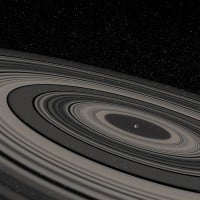
Dubbed as the "Super Saturn" planet. While the planet itself is larger than our gas giants, this planet is known for having an extremely large ring system (consisting of 30 rings, or even more than) which approximately two hundred times larger compared to the rings of Saturn. The planet accumulating this such of an enormous ring size remains a mystery. This planet orbits a relatively young star that spans only 16 million years. It is considered to be the one of the most bizarre planets ever discovered.
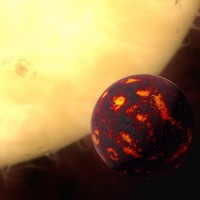
55 Cancri E or known as the diamond planet is a superearth two times larger, and denser as compared to earth. It orbits a star similar as to the sun which is approximately 40 light years away from our solar system. Apparently, this planet is very close to its star that it takes less than an earth day to complete an orbit. Mostly known for having suspected of having diamonds (of one thirds) and graphite on its surface due to the sheer carbon pressurizing the planet. In theory, if all of the contents of this planet were to be mined, it could potentially be worth nonillions (a number equal to 1 followed by 30 zeroes) of dollars.
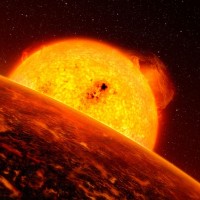
Sharing similar traits of the Jupiter's moon Io, this may be not only be the most deadliest planet, but one of the bizarre discovered exoplanets. CoroT-7b is a rocky lava planet which is known to be extremely close to its star (23 times closer than that of the orbit of Mercury) with surface temperatures with that of over 2700 K. Apparently, it orbits its star spanning within just 1.6 million miles within its host star, and its known to have the one of the shortest orbits of 20 hours, just less than a full earth day. Not only this planet consists of a hot surface and such a close orbit, but its atmosphere also is thought to rain rocks and other minerals. It may be also speculated that this planet consists of lava boiling oceans. If hell would be real, it would definitely take place on this planet.
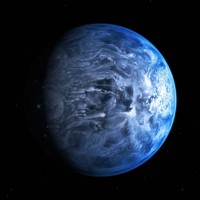
Some of us may have thought that Neptune was the windiest planet, but this planet takes the throne. This planet may seem very appealing to visit judging by its stunning blue appearance, but like other planets, this consists one of the most dangerous environments. HD 189733b is not only known to have a strange weather system, but also consists of the fastest winds spanning over 5,000 mph, more than several times faster than the speed of sound. What makes this planet far more interesting is that this planet rains molten glass not directly to the surface, but sideways due to the speed. Anyone, even with future-tech space equipment probably wouldn't last this long within the atmosphere in this deadly planet.
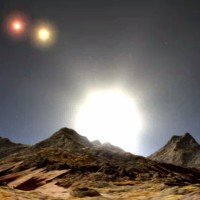
Ever wondered that there was a real life Tatooine existing in our universe? Now it is, close enough. Although binary stars and multiple star systems are quite common in the universe, HD 188753 Ab is the first planet to be known orbiting a triple star system belonging to the constellation of Cygnus, roughly 151 light years away from our solar system. It may look ideal to take a short vacation of this barren place, but its likely surface temperature may render it uninhabitable. Indeed, it definitely looks like fiction entered the non-fiction world.
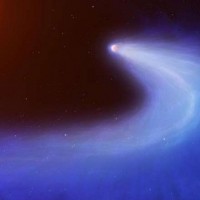
Known for leaving disproportionately large hydrogen trails larger than that of its host star. The planet itself is roughly the same size as Neptune, but apparently one of the smallest transiting planet discovered so far, and just as near as roughly 30 light years away from our earth. Gliese 436 B consists of a temperature just a little over 700+ K. Which is more interesting though, that this planet's surface consists of ice and a rocky core which is surrounded by water. This is not the ice you'd normally see on earth, but this kind of ice residing on this planet is deemed exotic. The ice there is not affected due to its temperature, but the sheer pressure on the planet keeps the ice in solid form, hence why this planet is called the burning ice planet.
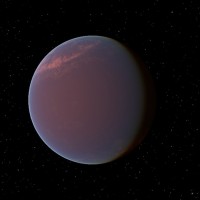
This is another superearth which is known as the ocean planet, which distance spans close as 40 light years away from our solar system. It is almost large as compared to Neptune. Apparently, this is also the first super earth which consists of an atmosphere (dense steaming atmosphere). Despite its suitable gravity similar to our earth and its appearance looking sustainable, it is unfortunately not - its temperature spans twice above the boiling temperature, and it's thought the atmosphere would be filled with thick vapor. Who knows what sea life could lurk there miles below?
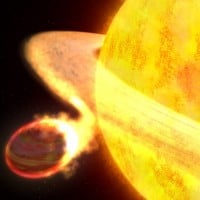
This is a hot jupiter planet known for being very close to its star in orbit, to the point that its slowly being devoured by it. It would take roughly more than a full earth day to completely orbit its star. Being discovered in April 1 in 2008, it is also known for having one of the lowest densities, and it being the hottest planet. In fact, the gravity pulled by its star causes this planet to be stretched into an oval shape. Despite its extremely hot surface which spans over 2,500 K, water has been discovered on its atmosphere by the Hubble Telescope.
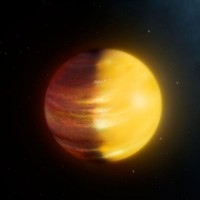
For those who are fond of flashy gems, you may want to take a look on this yet another alien planet, which is even larger than Jupiter. Discovered around 2008, this planet is known for its peculiar weather. Like other planets presented in this list, this tidal locked planet orbits very close to its host star, but it's not only that. Hat-P-7b holds one of the most bizarre weather systems which consists of clouds that rain corundum, a material that is responsible for making rubies and sapphires, which really concludes how far more interesting and bizarre weather systems can be in extraterrestrial planets.
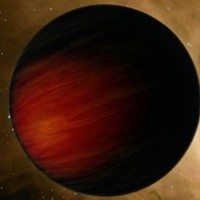
Discovered back in 2006, this is known as the darkest exoplanet discovered so far, holding its title since 2011. Despite this planet being close to its star, it is only able to reflect less than 1% light, including its atmosphere and clouds; not even the darkest thing in your life is darker compared to this planet, even the darkest coal. It's still a mystery on how this alien-looking planet and its materials work, or why/how is this planet so dark.
Being 11 times larger than Jupiter, this exoplanet is known for its extreme distance away from its host star, orbiting 650 times farther than that of earth. Pretty perplexing as the average star's protoplanetary disc can not form planets in an unusually faraway distance, especially gas giants.
A gas giant whose core has been exposed - with its atmosphere said to be robbed off from its star.
How was this not here before? OGLE-2005-390lb is one of the coldest exoplanets ever known.